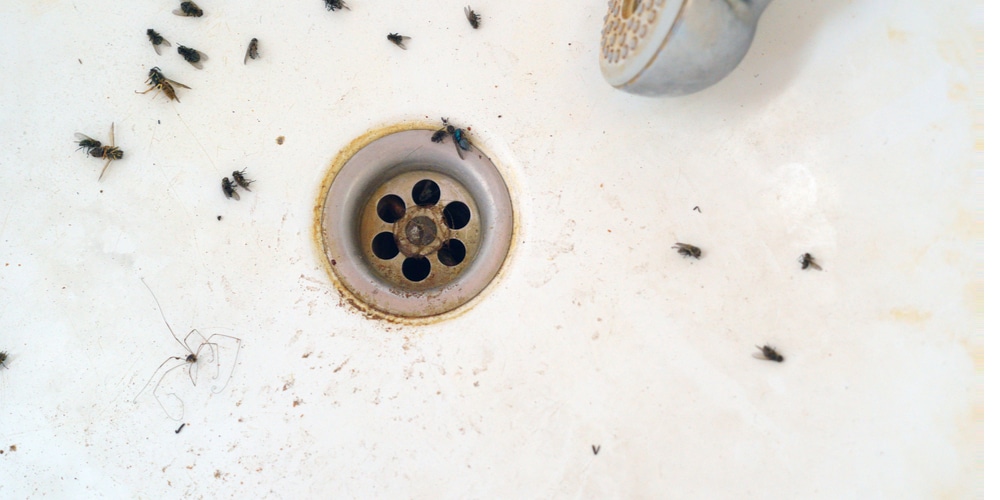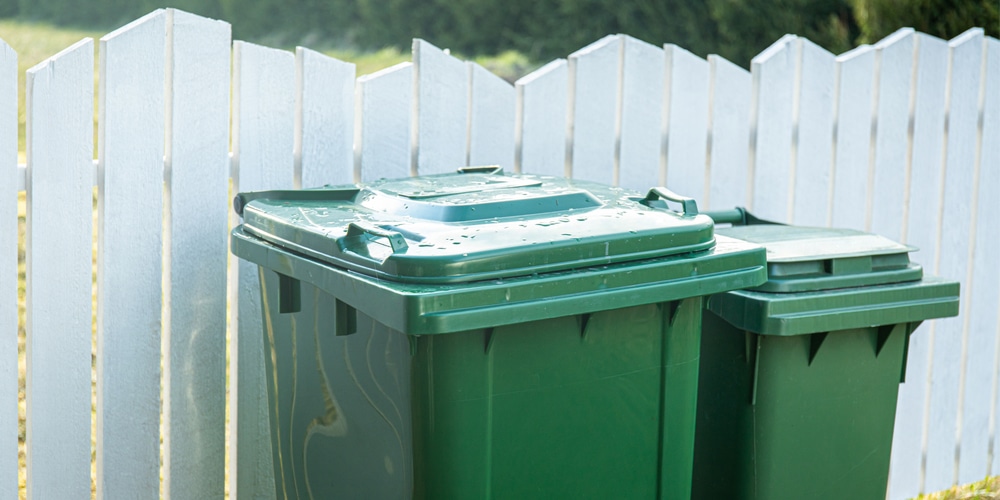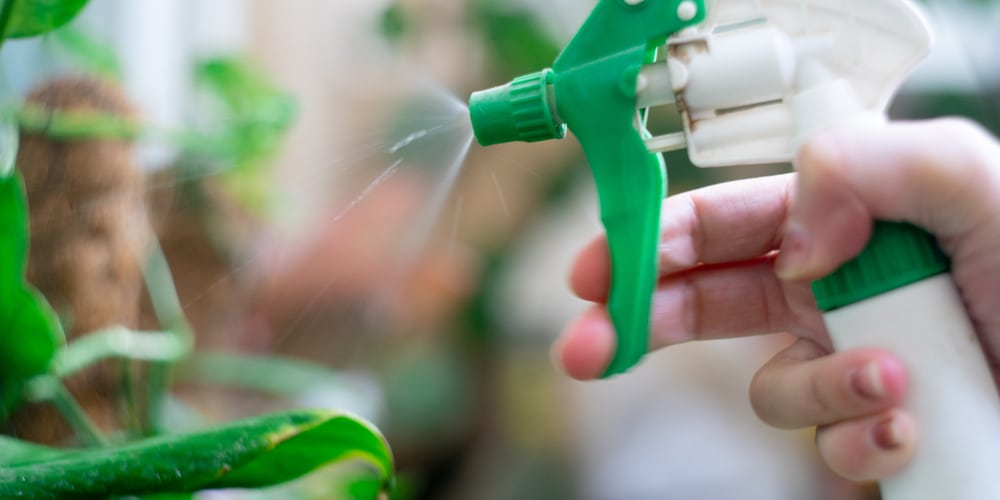Decision Tree for Getting Rid of Drain Flies: Step By Step
Step 1: Confirm Presence of Drain Flies
- Question: Have you seen small, moth-like flies around drains or damp areas?
- Yes: Proceed to Step 2.
- No: Continue regular cleaning; monitor for signs.
Step 2: Identify Problem Drains
- Action: Check which drains are affected.
- Method: Place a piece of clear tape over the drain opening overnight. If flies are stuck to the tape in the morning, the drain is a breeding site.
Step 3: Clean Drains Thoroughly
- Action: Remove organic material where drain flies breed.
- Tools and Materials:
- Drain Brush: Use to physically scrub the insides of the pipes.
- Baking Soda and Vinegar: Natural cleaning solution that foams and helps remove buildup.
- Enzyme Drain Cleaners: Apply as per instructions to break down organic material without harming pipes.
- Tools and Materials:
Step 4: Use Boiling Water
- Action: Flush drains with boiling water.
- Frequency: Pour boiling water down affected drains daily for one week.
Step 5: Seal Unused Drains
- Question: Are there any rarely used drains?
- Yes: Seal them or pour mineral oil into them to prevent flies from breeding.
- No: Ensure all frequently used drains are kept clean and free from organic buildup.
Step 6: Install Drain Screens
- Action: Place fine mesh screens over drains to prevent flies from entering and exiting.
Step 7: Use Insecticides
- Question: Are drain flies still present after cleaning?
- Yes: Consider using a safe insecticide for drains.
- Options:
- Insecticidal Gels: Apply directly into the drain.
- Aerosol Sprays: Use only if safe for indoor environments and follow manufacturer’s guidelines.
- Options:
- No: Continue with maintenance.
- Yes: Consider using a safe insecticide for drains.
Step 8: Maintain Drain Cleanliness
- Routine Actions:
- Regular Cleaning: Weekly cleaning with brushes and enzyme cleaners.
- Boiling Water: Monthly flushes with boiling water to prevent organic buildup.
Step 9: Evaluate and Adapt
- Question: Are flies still present after taking these measures?
- Yes: Reassess the cleaning regimen or consult a professional.
- No: Continue preventive practices to keep drains clear and fly-free.
Additional Tips
- Avoid harsh chemicals like bleach as they can damage pipes and often do not effectively reach the organic material where flies breed.
- Regularly check and maintain all home drains to prevent future infestations.
Identifying Drain Flies
Before you gear up for the battle against these pesky insects, it’s crucial to know your enemy—drain flies.
By identifying them accurately, you’re setting the stage for effective eviction from your home.
Spotting Adult Drain Flies
- Appearance: Check for small, moth-like insects with a fuzzy appearance.
- Adult drain flies are typically ⅛ to 1/6 inches long with a unique pattern of veins on their wings, which they hold over their bodies like a roof when at rest.
- Common Areas: You’ll often find these flies near sinks, showers, and other damp areas where they like to congregate and buzz around.
Locating the Breeding Grounds
- Inspect Drains: Take a close look at your drain pipes.
- If you spot slimy substance, that’s a huge billboard saying, “We breed here!”
- This goo is a mixture of decomposing organic material, the perfect home for larvae.
- Other Spots: Don’t limit your search to drains.
- Check any moist environment in your home, such as under leaky pipes or plant pots, for that same slime sign.
Natural Removal Methods

DIY Vinegar Trap
- You’ll need:
- A bowl or cup
- Apple cider vinegar or white vinegar
- A few drops of dish soap
- Plastic wrap
- Steps:
- Fill the bowl with vinegar, enough to attract the flies.
- Add dish soap, which will break the surface tension.
- Cover the bowl tightly with plastic wrap.
- Poke small holes to let the flies in but not out.
This simple trap will lure drain flies with its tantalizing vinegar aroma and then trap them with a soapy demise.
Baking Soda and Vinegar Solution
- You’ll need:
- 1/2 cup baking soda
- 1/2 cup salt
- 1 cup vinegar
- Steps:
- Pour the baking soda and salt directly into the drain.
- Chase it with vinegar to create a bubbling reaction.
- Let it sit overnight before flushing with hot water.
Harnessing the power of a volcanic reaction, this combo breaks down gunk and eliminates drain fly breeding grounds. Ready, set, bubble!
Chemical Solutions
When it comes to the fight against drain flies, chemical solutions can be the heavy artillery you need.
These products are designed to attack both the adult flies and the gunk they breed in, giving you a cleaner drain and peace of mind.
Insecticidal Sprays
- Target Adults: A few strategic squirts of these potent sprays can swiftly reduce the adult drain fly population.
- Application: Make sure to follow the instructions carefully—apply directly to the drain area where flies are observed, generally at times of least drain usage.
Gel Cleaners
- Pipe Purge: These viscous agents cling to the sides of your pipes, obliterating organic matter and preventing new eggs from settling.
- Long-lasting: Often remaining active for several weeks, gel cleaners provide an ongoing defense against future infestations.
Preventative Measures

Keeping drain flies at bay means staying on top of maintenance and sealing off their common entry points.
Let’s get down to the nitty-gritty and make sure your pipes stay as fly-free as your summer picnics!
Regular Drain Cleaning
- Weekly Flush: Heat up the kettle because a weekly pour of boiling water down your drains can work wonders. This simple act can help prevent the gunky buildup that drain flies love.
- Bi-Monthly Scrub: Grab a pipe brush and give your drain a good scrubbing every two weeks. This ensures any lingering organic matter, which could be a drain fly’s next home, is dispatched quickly.
Sealing Entry Points
- Inspect and Repair: Take a walk around your home and inspect all your window and door screens for tears. A small patch job here can save you a big headache later.
- Seal the Deal: Check for gaps around your pipes under sinks and along walls. Use caulk or expandable foam to seal these potential fly highways to ensure those pesky critters stay outside where they belong.
Frequently Asked Questions
When drain flies start to hover around your drains, it’s time to take action. Here are the most direct answers to your burning questions about getting rid of these pesky insects.
What home remedies are effective for eliminating drain flies?
To tackle drain flies with ingredients from your kitchen, create a trap with apple cider vinegar, sugar, water, and dish soap.
This sweet and sticky mixture attracts the flies and traps them effectively.
Can vinegar alone be the solution to tackle drain flies?
Vinegar on its own can make an impact. For a simple method, leave out a bowl of vinegar near the drain as a trap.
Drain flies are attracted to the smell, but it’s the addition of soap that really ensures they can’t escape.
Will using bleach help in getting rid of drain flies?
Using bleach may seem like a straightforward solution, but it’s not the most effective method for drain flies.
Bleach can clean the drain but might not reach the larvae, which hide in the deeper parts of your pipes where the bleach can’t reach.
What causes a sudden infestation of drain flies?
Sudden infestations are usually caused by an accumulation of gunk and organic material in your drains where drain flies can breed.
Fix leaks and ensure your pipes are clear to prevent giving these flies a breeding ground.
Is there a permanent solution to prevent drain flies from coming back?
To keep those drain flies gone for good, regularly clean your drains and use drain covers.
Also, fix any damp areas where they could breed and ensure your plumbing is in tip-top shape.
Are drain flies known to be harmful to humans or pets?
Rest easy knowing that drain flies aren’t known to bite or transmit diseases to humans or pets.
Their presence is more of a nuisance due to their constant swarming and the fact that they indicate a dirty drain.
Last update on 2025-06-06 / Affiliate links / Images from Amazon Product Advertising API



